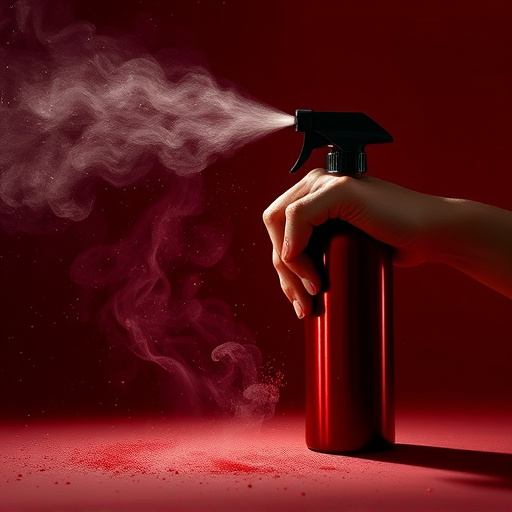Hot climate pepper spray storage requires cool, dry conditions away from direct sunlight to maintain effectiveness and prevent degradation. Follow manufacturer guidelines, regularly inspect for spoilage, comply with local laws, and select formulations designed for warm environments for optimal self-defense in challenging conditions.
In hot climates, pepper spray self-defense weapons offer a powerful yet non-lethal option for personal safety. Understanding the basics of how and when to deploy this potent tool is essential. This article guides you through crucial aspects of pepper spray safety, including storage practices for optimal effectiveness in hot climate conditions. Learn about choosing the right spray, legal considerations across regions, and effective strategies to protect yourself with confidence.
- Understanding Pepper Spray Basics in Hot Climates
- Safe Storage Practices for Optimal Effectiveness
- Choosing the Right Pepper Spray for Your Needs
- Legal Considerations and Permits in Different Regions
- Effective Self-Defense Strategies with Pepper Spray
Understanding Pepper Spray Basics in Hot Climates
In hot climates, pepper spray self-defense weapons require special consideration due to the potential impact of high temperatures on their effectiveness and longevity. Understanding how heat affects pepper spray is crucial for users in such environments. Typically, pepper spray formulations are designed to remain potent within a specific temperature range, and excessive heat can cause premature degradation, reducing its potency over time.
Proper storage becomes even more critical in hot climates. Storing pepper spray in a cool, dry place, away from direct sunlight, is essential to maintain its integrity. Many manufacturers recommend keeping the containers sealed until use to preserve the active ingredients. Additionally, users should regularly check the expiration dates and conditions of their pepper sprays to ensure optimal performance when needed.
Safe Storage Practices for Optimal Effectiveness
Proper storage is essential for maintaining pepper spray’s effectiveness and safety, especially in hot climates. Keep your pepper spray out of direct sunlight and heat sources to prevent degradation of its active ingredients. Extreme temperatures can reduce the potency and shelf life of pepper spray, so storing it in a cool, dry place is ideal. Many experts recommend placing it in a locked cabinet or safe to ensure kids and pets cannot access it accidentally.
Consider using airtight containers to protect the spray from moisture and humidity, which can also contribute to its deterioration. In hot environments, regular inspection of the spray’s condition is vital. Check for any signs of leakage, corrosion, or changes in color or texture, as these could indicate spoilage. Replace the pepper spray if it shows any signs of degradation to ensure optimal performance when needed.
Choosing the Right Pepper Spray for Your Needs
When selecting a pepper spray self-defense weapon, considering your specific needs and environment is crucial. For individuals residing in hot climates, choosing a pepper spray designed for such conditions is essential. These sprays are typically formulated with more potent capsaicin, which can be effective in hotter, humid environments where regular pepper spray might not perform as well.
Proper storage is another key factor. Keep your pepper spray out of direct sunlight and extreme temperatures to maintain its potency. In hot climates, this could mean storing it in a cool, dry indoor location or using a specialized case designed to protect it from the elements. Always follow the manufacturer’s guidelines for storage and usage to ensure effectiveness when you need it most.
Legal Considerations and Permits in Different Regions
The legality and regulations surrounding pepper spray self-defense weapons vary significantly across different regions, with each area having its own set of restrictions and requirements. When considering hot climate pepper spray storage, it’s crucial to understand that some locations have strict rules regarding civilian ownership and carry of such devices. Certain states or provinces might only permit the use and possession of pepper spray for self-defense within specific circumstances, such as in cases where one is facing an imminent threat.
In many places, obtaining a permit or license for carrying pepper spray legally requires individuals to pass a safety training course and demonstrate proficiency in its proper handling. Additionally, there might be age restrictions, with some regions allowing the purchase and use of pepper spray only by adults over a certain age. It’s essential to research and comply with local laws to ensure safe and legal hot climate pepper spray storage.
Effective Self-Defense Strategies with Pepper Spray
Pepper spray has established itself as a potent and effective self-defense tool, especially in hot climate regions where physical altercations can be more intense. Its ability to temporarily disable an assailant gives users precious time to escape dangerous situations. When choosing pepper spray for self-defense, consider factors like range, durability, and heat output, which are particularly crucial in warm environments where the spray’s effectiveness may vary with temperature and humidity.
Effective deployment strategies include understanding the ideal distance to use pepper spray (typically 2–3 meters) and practicing aiming techniques. Storing pepper spray safely is also vital; keep it in a cool, dry place away from direct sunlight, as extreme heat can reduce its potency. In addition, ensure accessibility—keep it in an easily reachable location, such as within close proximity to entry points or personal spaces, for prompt utilization when needed.
In conclusion, pepper spray self-defense is a powerful tool, especially in hot climates, but its effectiveness depends on proper storage and understanding of legal considerations. By choosing the right pepper spray for your needs and adhering to safe storage practices, you can ensure optimal effectiveness. Remember, knowledge and preparation are key to staying safe and secure in any environment.
